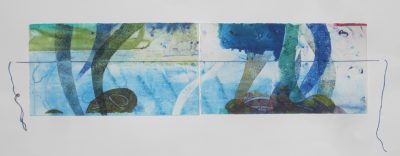Mapping Printmaking
Mapping Printmaking Portugal
I have been invited and accepted into this new project.

Introduction
The “Mapping Printmaking” project consists of a work in progress on a digital book that compiles hundreds of artists in the printmaking field in the world.
All the traditional engraving techniques are covered, such as Metal Engraving, Linocut, Woodcut, Monoprint, Lithography, Photo Engraving, Mixed Engraving Techniques, etc…, etc…, but also Digital Print and, more or less Conceptual Installation that clearly refers to the printmaking landscape.
This digital project will be online for a period of at least 10 years, but it is intended that it will continue for longer and could give rise to other projects, namely an International Biennial of Graphic Work in the virtual space of the internet and others.
https://www.mapping-printmaking.com/
More than a mere compilation book of artists in the field of Printmaking, this project aims to give greater emphasis to Graphic Work in the context of Contemporary Art, with one of its main objectives being the dissemination of international projects that can work in a network, providing contacts, carrying out partnerships, promoting exchanges, events, workshops and other more or less physical or virtual projects.
In a digital era like the one we live in, in which the world revolves around a global space, it makes perfect sense to focus on this vast universe, developing projects in this virtual world that are similar to the speed of the internet. In this sense, “Mapping Printmaking” will be able to register an absolutely unequivocal presence on the world of Graphic Work, artists, techniques, as well as on their aesthetic productions in each period of their artistic careers, thus making their work known and promoted throughout the world.
Although there is nothing so original about creating a book that records this vast artistic activity in the world of printmaking, it leaves no doubt that in a certain way it will be a pioneering project, due to the dimension it intends to give, the artistic quality, the contemporary design and graphic quality, but fundamentally due to a great ambition in terms of the results that we intend to obtain with this launch on a global scale.
As it is an ongoing project, with no deadline to finish, it is an open work, always being updated, both in terms of number of artists, graphic works, and countries represented.
For this reason, we can consider it to be a book in an “expanded field”, because, like the Graphic Work in the artistic context, it is constantly changing, constantly receiving new determinants that shape its structure and scope, therefore being one of the most significant and relevant aspects of “Mapping Printmaking”.
This Project tries also to develop the study of the relations between the traditional and the contemporary engraving in the context of the contemporary art. In this perspective, it investigates the transformations of the etching through the history of art and its contributions in response to the technological changes and to the stimulus from other subjects.
From the approach of a parallel between the traditional engraving and its hybrid derivatives, with special attention to photographic and digital processes, contrasting with mediation strategies of the museums and art events since its modern formation, this project indicates notes, dialogues and possible challenges to its autonomy and livelihood nowadays.
It also seeks to produce a network of relationships among engraving artists, their productions and the world of art, questioning the concepts and perceptions of this difficult relationship, pointing out convergent principles for action and new mediation strategies for printmaking, in a context of masses and of a global art industry. To this end, it examines the practices of the artists and their contemporary artworks.
The fluidity of the disciplinary boundaries and the disruption of rigid stereotypes and generalizations that characterized the engraving has significantly expanded its field, projecting it into a reality that must be urgently clarified. Here is a great contribution.
As we saw, the break with traditional engraving reaches its apogee with the scope of photomechanical processes; engraving events incorporate the concept of multiple. In this way, the artistic production of engraving approached the characteristic of loss of the “aura” pointed out by Walter Benjamin, mainly because it houses works that fit into the concept of multiple, through photographic and digital processes. For this reason, it makes perfect sense to rethink engraving based on these changes and reflect on the dialogues and strategies that new productions present in the light of discussions about art.
In conclusion, without compromising a definitive conclusion that should only be made in a more in-depth assessment and after several years have passed and results have been obtained, we can assure that, with greater or lesser preponderance in the world of the Graphic Art, “Mapping Printmaking” will be a project that will certainly contribute to a greater projection and visibility of Graphic Work in the universe of Contemporary Art in the
world.
Nuno Canelas
Curator of the Mapping Printmaking
MAPPING
